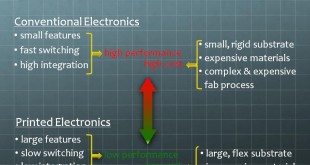Lasers are widely used in household appliances, medicine, industry, telecommunications and more. A nanolaser is a laser that has nanoscale dimensions. These tiny lasers can be modulated quickly and, combined with their small footprint, this makes them ideal candidates for on-chip optical computing. Several years ago, scientists introduced nanolasers …
Read More »Cellulose nanopaper promising for green electronics, green vehicles, energy harvesting and optical sensing
In recent years, nanomaterials have displayed potential in effective detection and removal of greenhouse gases, chemical contaminants, organic pollutants, and biological agents. These materials come in various morphologies and have various functions (e.g., adsorbents, catalysts, or membranes). The high reactivity and high surface area of nanomaterials are some of the …
Read More »Graphene enables room temperature single photon emitter and detector for unhackable Quantum Key Cryptography (QKD)
Quantum Key Distribution, or QKD, enables two remote parties, “Alice” and “Bob”, who are connected by a passive optical link to securely generate secret key material. Single-photon sources (SPSs) and single-photon detectors (SPDs) are key devices for enabling practical quantum key distributions (QKDs). Single photon generation is necessary for secure quantum transmission; …
Read More »DARPA DeMi developing technologies for space based telescope on it’s military CubeSat satellite for Space Surveillance Awareness
The volume of space between the Earth’s surface out to geosynchronous orbit is enormous—equivalent to 240,000 times all the Earth’s oceans. Yet the number of objects calling that volume home is growing all the time—not just with satellites but with debris of all kinds, natural and manmade. And keeping track …
Read More »Printed electronics breakthroughs leading to Printed and flexible electronics (PFE) revolution
While the conventional electronics like computers and smartphones is built around silicon integrating billions of transistors and is manufactured using complex, costly and wasteful processes in multi-billion dollar foundries , The printed and flexible electronics aim to replace this by “organic” semiconductors which are long chains of thousands of repeating …
Read More »Nanotechnology based smart textiles protects against chem, bio agents and also initiate movement in response to a stimulus
Wearable electronic textiles (e-textiles) have become a focus of significant research interest due to their potential applications in sportswear, military uniforms, environmental monitoring and health care. Smart textiles are defined as textiles that can sense and react to environmental conditions or stimuli, from mechanical, thermal, magnetic, chemical, electrical, or other …
Read More »Nanotechnology for Bulletproof and Armor Materials
In order to defeat a threat, armor systems are designed to: deform/deflect the threat; dissipate energy; and prevent residual debris penetration. Most anti-ballistic materials used in bullet-proof jackets or explosion-proof blankets are made of Kevlar, Twaron or Dyneema fibers, which stop bullets from penetrating the surface by spreading and absorbing …
Read More »Reconfigurable or Adaptable Electronics technologies based on Nanotechnology enable resilient systems for Extreme Environments and multi-function adaptive military systems
Traditionally, electronics have been designed with static form factors to serve designated purposes. This approach has been an optimal direction for maintaining the overall device performance and reliability for targeted applications. As the world enters the age of ubiquitous computing, the need for reconfigurable hardware operating close to the fundamental …
Read More »Carbon Nanotubes to usher carbon revolution for post silicon future, reduce Carbon Dioxide emissions to construct hypersonic weapons s
Carbon nanotubes (CNTs) are hollow cylindrical tubes formed by rolling a sheet of carbon atoms arranged in a hexagonal ring, as in a sheet of graphite, either in monolayer (single walled nanotube, SWCNT) or multilayer (multi-walled nanotube, MWCNT) form. Their diameter may range from 0.7 (SWCNT) to 50 naometers …
Read More »Meta materials based Radar cloaks to hide warships, drones and fighter planes from radars
Stealth technology has proven to be one of the effective approaches to enhance the survivability of Aircrafts. Aircraft/helicopter designers are making them stealthier by reducing their signatures; viz. visual, aural, infrared (IR), and RADAR cross section. Advancements in stealth technologies, as demonstrated by the very low RCS of stealth aircraft …
Read More » International Defense Security & Technology Your trusted Source for News, Research and Analysis
International Defense Security & Technology Your trusted Source for News, Research and Analysis









